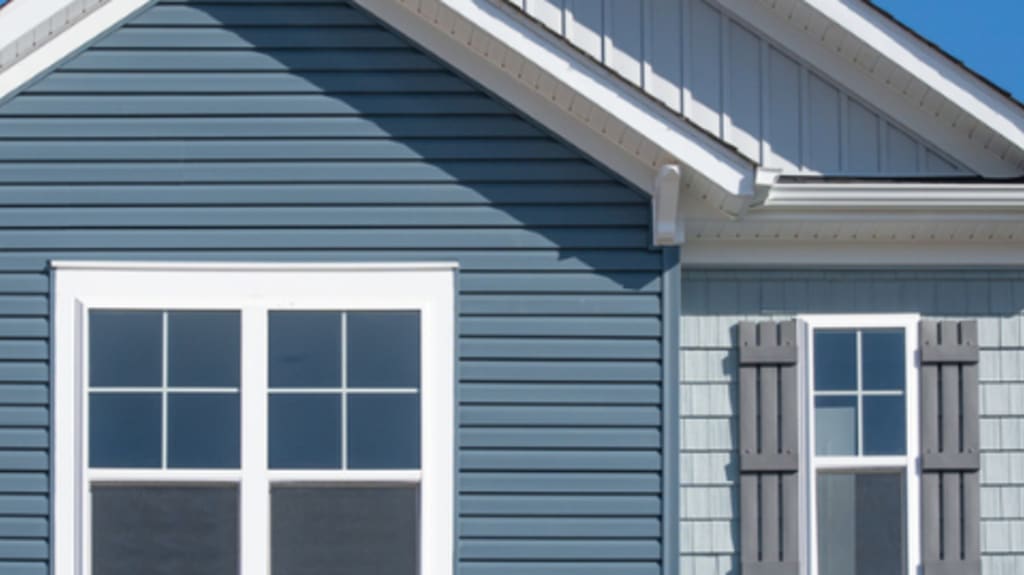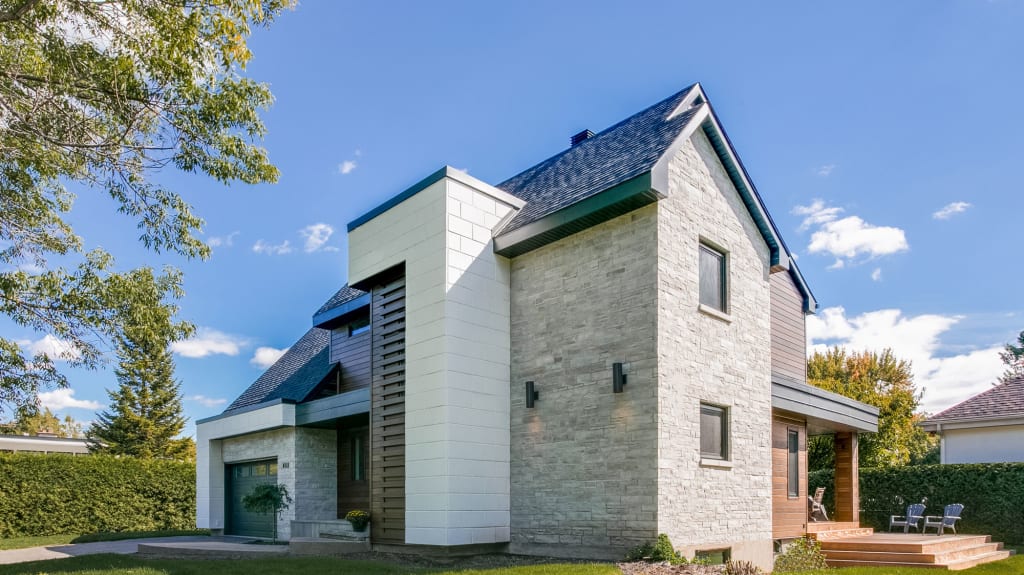If you’re a homeowner, you know how important it is to keep up with regular maintenance to ensure that your home stays in good condition. One area that often needs attention is your house siding. Not only does it affect the appearance of your home, but it also provides protection and insulation. Over time, exposure to the elements can cause damage, making replacing house siding necessary. Here are eight warning signs that it’s time for a siding replacement.
Does replacing house siding add value?
Replacing your house siding can be a smart investment that adds value to your home in multiple ways. Not only does it enhance your home’s aesthetic appeal, but it can also increase its overall value, which is particularly advantageous if you’re looking to sell. What’s more, depending on the siding materials used, replacing house siding can be a cost-effective way to increase your home’s value.
But there’s more to house siding than just looks. It provides essential protection for your home’s structure and foundation, shielding them from the elements and harsh weather conditions. And don’t forget about the added benefit of insulation, which keeps your home comfortable and energy efficient all year round. With these advantages, it’s no wonder that replacing house siding increases property value significantly, delivering an excellent ROI!
When is it time for a house siding replacement?
If your house siding is looking worn out or damaged, it may be time to consider replacing it. Here are some signs to look out for.
Cracks and holes
Cracks, holes, splits, and other physical damage to house siding are some of the most common reasons for needing a siding repair or replacement. These issues can occur due to age, weathering, or other external factors such as impacts from debris or accidents. Over time, the constant exposure to weather and temperature changes can cause house siding materials like vinyl and wood to expand and contract, leading to cracks and splits.
If you notice any physical damage to your siding, it’s best to get a professional siding contractor to inspect it and recommend a course of action. In some cases, just a few panels of replacement siding may be enough. But, in more severe cases, you may need to replace the entire siding, insulation, and waterproofing, as well as decontaminate if there is mould.

Fading and discolouration
Fading and discolouration are other signs that your home’s siding may need replacing. Exposure to the sun’s UV rays, weather, and other environmental factors can cause pigments in the siding to break down, resulting in a dull and faded appearance. While some materials like vinyl siding just need a coat of paint, others may require more extensive work.
Acid rain can also cause discolouration and, in some cases, the material can become brittle and prone to cracking. Restorative paints can remove the oxidation, but in more severe cases, you will have to replace the siding in that area. Regular maintenance can help protect your home’s siding from the effects of acid rain.

Warping and buckling
If your house siding panels start to curve or pull away from the wall, then you’re dealing with warping or buckling. Some house siding materials are more likely to experience these types of issues than others. For example, vinyl siding is particularly prone to warping in high heat.
Porous options like natural wood siding can warp and buckle due to excessive moisture. In some cases, warped wood siding can be a sign of rot. The easiest way to test this is to insert a screwdriver under the warped panel. If the siding feels soft underneath, you indeed have a rot problem. Also, make sure to try tapping the surface of the panel. If it sounds hollow, or even cracks, then you have identified dry rot, which is extremely hard to detect visually.
While fibre cement siding and aluminium siding tend to be more resilient, issues can still crop up if they’re not installed properly. For example, if the nails used to hold the siding material in place are too tight, it’ll cause a bulge. Moreover, flashing around windows and doors can fail, allowing moisture to penetrate behind the siding. Any of these can invite more moisture and damage underneath, so replacing house siding panels is necessary to prevent more serious issues from developing.

Rotting and mould
Sometimes patches of rot and mould are in plain sight instead of hidden behind your house siding. Unfortunately, rotting can occur in many types of house siding materials, especially wood and fibre cement. The combination of high moisture levels and precipitation can cause the wood fibres to break down and begin to rot, which not only weakens the siding but also provides a perfect breeding ground for mould and mildew.
If left untreated, rot and mould can spread throughout your siding, potentially causing structural damage to your home. Plus, damaged siding can allow moisture to penetrate even deeper into your walls. This can cause damage to the framing, insulation, and other key structural components. To make matters worse, the bacteria and fungi involved can attract unwanted insects and pests.
While some small amounts of mould growth on your siding are normal, it’s always best to take action to prevent further damage. You can try cleaning it off using some water and an appropriate cleaning product. However, if the problem persists, replacing your house siding is the way to go.

Unexpected high energy bills
If your energy bills have been creeping up without explanation, your house siding could be to blame. Your masonry and exterior cladding play a big role in your home’s insulation and energy efficiency, so you’ll want to ensure that they’re in good condition. Old, worn, or damaged siding can let air leak in or out of your home, leading to a higher energy bill and an uncomfortable living environment.
Moreover, gaps in siding can lead to unwanted moisture, water damage, and even pests and insects making their way into your home. If you’re experiencing any of these issues, then get your siding inspected – it may be time for a replacement. Consider investing in energy-efficient and eco-friendly materials like wood, stone, or brick siding.

Insect damage
While insects are great for the ecosystem, they can do untold damage to your house siding. Termites, wasps, and carpenter ants can make holes in your cladding, allowing moisture to penetrate the wooden supports. Meanwhile, woodpeckers may drill holes in your siding and nest in behind the material. All in all, this can lead to rot and decay, weakening your siding and making it more susceptible to damage.
If you notice any signs of insect or pest damage, such as small holes, sawdust, or wood chips, it’s important to address the issue immediately. In some cases, you may need to replace the affected area to ensure that your home remains structurally sound. Also, consider speaking with an exterminator to keep the bugs at bay.

Poor aesthetic
Sometimes, your house siding just doesn’t fit the aesthetic you’re trying to achieve. Maybe the siding material has become worn or faded over time, or maybe it’s simply outdated – a relic of a bygone era. Whether you want to improve your home’s curb appeal for yourself or to attract potential buyers, it’s worth the investment.
In addition to cosmetic issues, poor aesthetics can often be an indicator of deeper problems with your siding. For instance, if your vinyl siding is cracking, it may be letting in moisture. Holes in wood siding may be a sign that there are termites or other unwanted pests. Replacing house siding early at the onset of these issues can help prevent more serious damage and ensure that your home looks great for years to come.

Signs of aging
No matter how well you maintain your house siding, it will inevitably age. Some of the signs have already been mentioned, such as fading, but aging manifests in other ways. In vinyl siding, uneven spots can begin to appear, where the shape becomes wavy and warped. Paint can begin to peel on wooden siding, and in more extreme cases, you can begin to see cracking and rot. At this point, replacing your house siding is important, as it can no longer adequately protect your home from the elements.

Are there grants to replace exterior siding?
Unfortunately, there aren’t any grants solely dedicated to house siding. However, don’t let that deter you if you’re looking to improve building airtightness or your home’s energy efficiency. There are many programs and tax credits – such as the Greener Homes Grant, Home Efficiency Rebate Plus, and the Rénoclimat program – that cover other exterior renovation projects like replacing insulation, windows, and roofs. So, you can take the opportunity to kill two birds with one stone.
Increase your home’s curb appeal with a siding replacement
Replacing house siding can be a great investment for your home. Not only does it improve curb appeal and overall aesthetics, but it can also increase the value of your property. With a variety of materials to choose from, such as vinyl, engineered wood, metal, and stone, you can find the perfect siding to fit your budget and personal style. To get you started, here are the average costs for the most common siding materials on the market, as well as our exterior cladding guide.
Don’t hesitate to hire a professional contractor who can ensure a proper siding installation and provide a warranty for their work. Replacing house siding may take time and effort, but you can enjoy a beautiful and durable exterior for years to come.





